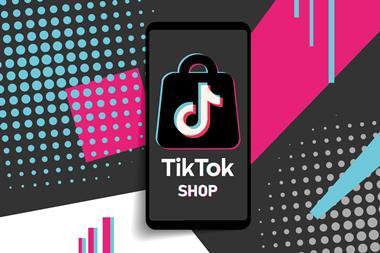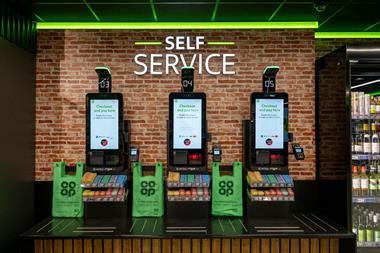Speaking to an international audience of retailers, Karel Dörner, associate principal of management consultant McKinsey, says what many in the room already know. Technologists, especially the most successful ones, are not immune to the pressures and issues in modern retail businesses that influence how they operate.
Dörner believes that there are five main business trends that have implications for the work of retail IT departments. The first is more sophisticated consumers. Aligned with this is the second, the greater availability of all kinds of information – including on product and pricing.
The third is that, at the same time, retailers are seeing increasing pressure on margins. Partly in response to this is pressure four, the globalisation of the supply chain.
The fifth, but by no means the least important, is multichannel fragmentation.
However, Dörner says that responses to these challenges can be broken down into four key factors, where the IT department can play a part of a larger business transformation process.
The first initiative that a retailer should undertake, according to Dörner, is work on its supply chain. Both efficiency and visibility should be priorities.
The second step is to better target customers. He believes that more sophisticated kiosks will be able to provide tailored services for customers. More work also needs to be done around content management, to make it easier for marketing messages delivered via multiple channels to be targeted and altered to reflect changing conditions, such as the weather.
Upgrading the in-store experience is the third factor, according to Dörner. If retailers want to avoid consumers comparing them with competitors purely on price, unique propositions need to be in place.
Improved experience
In addition, he believes that once a business case can be made for item-level RFID, checkouts will get much faster, because items will not need to be scanned individually. However, self-checkout is already providing an improved experience. “Self-checkout is not faster than using manned tills, but consumers think it is because they are controlling the process,” says Dörner.
The fourth element is reducing the cost of serving customers. He believes that retailers must take the best bits of emerging web tools – such as wikis, forums and blogs – and bring them into their company to collect information from staff and customers to make every employee more knowledgeable and cut the costs of customer service and support.
Dörner concludes that technical innovation must be managed actively if retailers are to align their business strategies with technology advances. He says that, while retailers generally know about innovations in technology, he does not see many adopt rigorous and integrated innovation management.
“Innovations are perceived as nice to have, though they may be vital to address the business trends,” he says. “Even if retailers do not manage innovation actively, they have to be aware of technology trends changing their customers’ behaviour and the general business logic.”
Future of retailing
The Centre for Retail Research has published a report, sponsored by Visa, looking at predictions for retailing between 2012 and 2015.
300 European retailers – two-thirds of which operate more than 150 stores or have revenues exceeding 200 million (£160 million) – were interviewed to examine likely developments in their own businesses.
The report shows that the majority of retailers expect store numbers to stay broadly the same between now and then, though internet sales will continue to make up a growing proportion of overall sales.
Stores will adapt to provide more customer and product information and allow customers to try out products before buying them, whether they do it there and then or order products over the web. The use of stores as a fulfilment channel for online orders also seems set to grow.
All these trends will have an impact on the technology projects that retailers embark on in the next five years.
The report shows that UK retailers expect their proportion of turnover coming from the web to hit 22.4 per cent by 2015, higher than the 18.8 per cent European average expected for that time. Also, retailers predict that 69.5 per cent of their web sites will be transactional by then.
However, more than 60 per cent of retailers feel that security concerns among customers will have an “important” or “very important” impact on the use of their web site. Security concerns mainly limit what customers are prepared to do on the internet rather than keep them away from it completely, it is felt.
UK retailers are also more likely to expect to have opened new store formats by 2015, either as a replacement for, or complement to, current formats.
Providing more information services in-store is the most likely format change. There is support for more multichannel formats, such as store pick-up facilities for web orders, and smaller-format stores to provide customer information being backed up with internet services.
On the subject of multichannel, the report predicts that 71.3 per cent of customers are expected to be researching products online before they buy by 2012 to 2015, up from the present 45.3 per cent.
Also, 47.2 per cent of retailers expect to provide electronic devices for customers in the form of electronic kiosks, screens or tablets by this time. The devices will provide customers with information or enable them to order products, either for collection in-store or delivery via the internet.
Retailers also agree that consumers will bring their own devices to use in stores. Some 39 per cent expect that customers will use mobile devices in-store to access information and receive details about promotions.
In the UK, 32 per cent of the retailers surveyed also feel that the consolidation of loyalty systems with payment cards is likely, so customers will have to present only one card in order to pay and receive loyalty points.
UK retailers are also fairly confident that the choices people have over how they pay for goods will have increased by 2015. About a third think that contactless cards or phone-based contactless payment will be in use in their business by then and 24 per cent feel that payment will be taken via keytags and fobs.


























No comments yet